When I first got into the gun thing, it became apparent that there would be certain topics of discussion that would always create controversy. The most obvious examples include GLOCK vs. 1911, .45 vs. 9 mm, large caliber/slow bullets vs. zippy/small caliber bullets, AR vs. AK. You get the idea One of those points of contention that’s firmly rooted in the gun world is direct impingement vs. piston driven. Both have pros and cons, and within the piston discussion, you can even discuss short stroke vs. long stroke systems. The whole thing can be quite confusing . . .
opinions seem to be firmly rooted. But, if you’re a gunny who counts yourself interested in converting your DI gun of choice to a piston system, Osprey Defense has a solution for you.
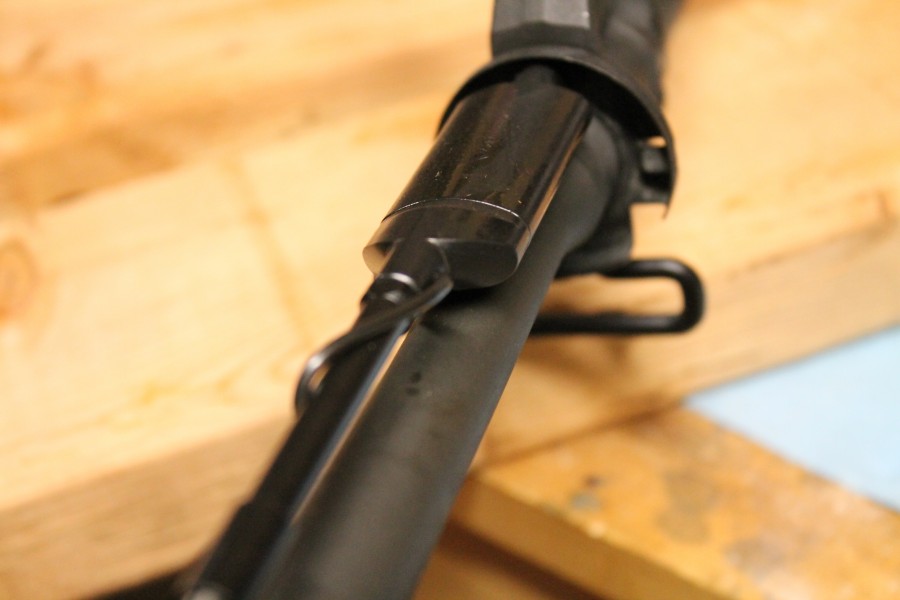
Osprey’s kit comes attractively packaged in a cardboard tube that includes the necessary retrofit parts along with replacement two piece hand guards for your typical milspec M4gery or M16 style rifle. Osprey makes some bold claims on their website and in their incredibly detailed white paper. The big ones that hop off the screen:
• 4 Minute Install
• 13X Increased Reliability
• Semi-Auto or Full Auto
• Suppressed or Unsuppressed
• Will Outlive Your AR15/M16/M4
• True Drop-In Solution
• No Permanent Gun Modifications
• No Valves/Screws/Springs
• 5 Year Warranty
• 100% Made in U.S.A.
Several of these claims could not be put to the test. Namely, the 13X reliability number, full auto (damn you, NFA), suppressed, outliving my gun, or the warranty. What I was able to test with relative ease was the install time (spoiler: it doesn’t take four minutes), and some minor function testing. But first, let’s talk about how this retrofit works.
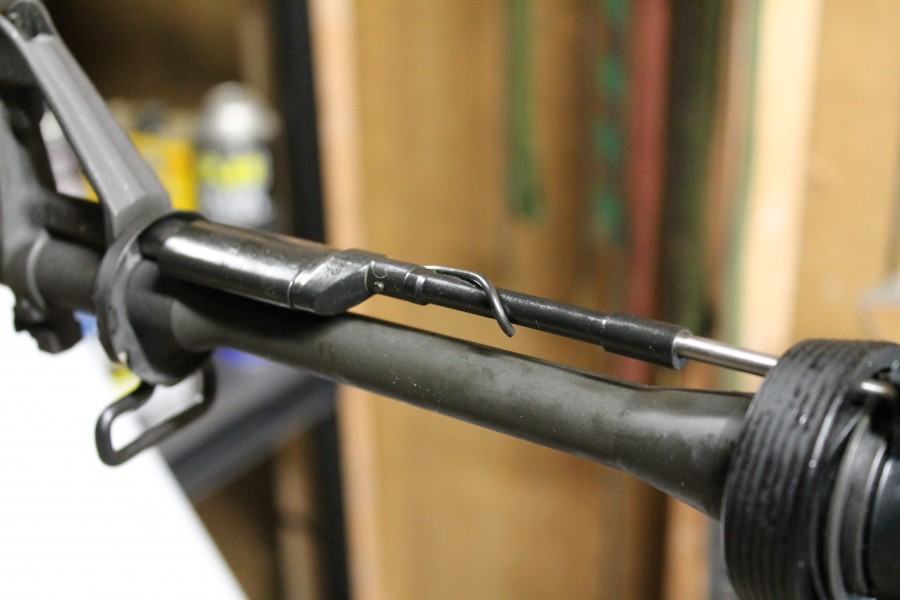
Nick gladly handed over his MEAN Arms AR as the donor rifle for this project. The MEAN gun is about as M4gery as it gets, sporting a two-piece plastic hand guard, A2 style gas block/front sight combo, and a carbine-length gas system.
Nick assured me that I was receiving an utterly reliable gun, but I don’t trust him now that he’s skinny, so I took it to the range and burned through about 100 rounds of mixed 5.56 and .223. As promised, the gun was utterly reliable. And as with any DI gun, it was filthy by the time I finished. I gave it a thorough scrubbbing, and then took it to the laboratory for retrofit.
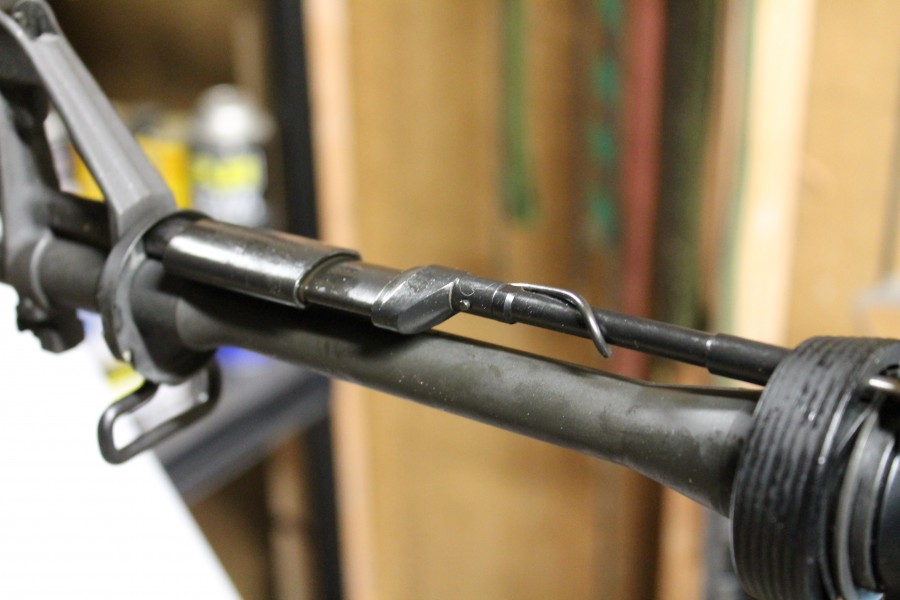
As a short stroke system, the Osprey kit has a small kidney shaped chamber of sorts that is pinned to the gas block. A similarly shaped piston slides inside that chamber and is connected to a rod that acts on the retrofit bolt carrier that ships with the Osprey system. The firing cycle, instead of blowing hot gas and carbon inside the action, acts to move the piston a few inches. This sharp tap is enough to send the bolt carrier back, completing the cycle.
Installation of the Osprey system might take 4 minutes for an experienced armorer all hopped up on Red Bull with an endless loop of speed metal playing in the background. For a more sedate, whiskey sipping Texan listening to Bob Dylan, this install took roughly a half hour, or the duration of Highway 61 Revisited. To complete the install yourself, you’ll need a nice set of punches like the ones supplied in the Geissele Armorer’s Kit along with some way to immobilize the front sight. Various places sell a Delrin block for that sort of thing, but I’ve always gotten by with a few 2x4s and a strong bench vise.
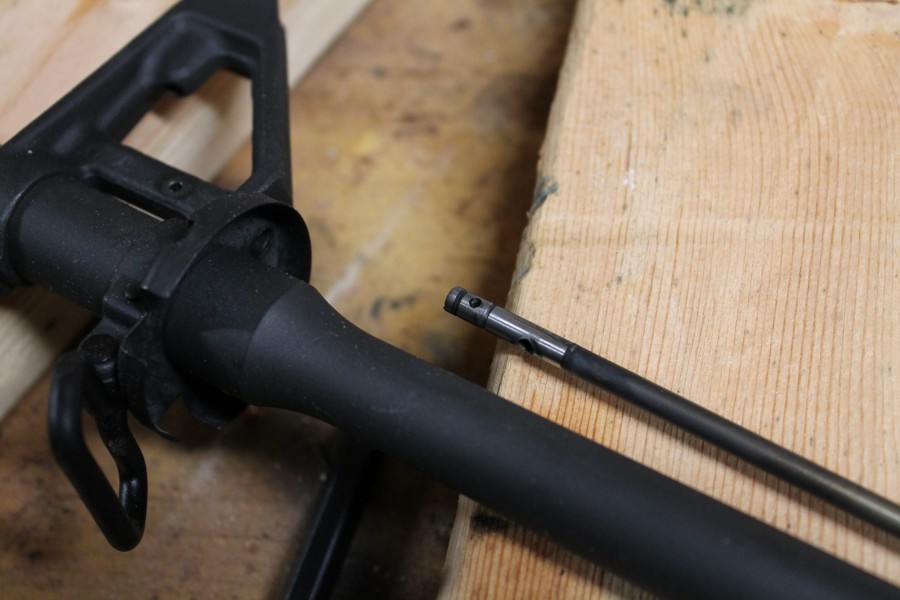
The first order of business of course is to check that the gun is empty and safe. Once that’s done, remove the upper from the lower. Set the lower aside. Take a sip of scotch. Then remove the bolt carrier group and the two piece hand guard. At that point, you’re free to remove the pin that holds the old gas tube in place. Remove the gas tube. I used this opportunity to run a brush and some solvent through the gas block, but you really don’t have to.
Once the old parts are cleared out, pin the chamber in place. This part stays permanently connected to the gas block, and the attachment point seems to be fairly solid. The next order of business is to finagle the piston, rod, and receiver bushing into place. This was easily the most time-consuming part of the whole install as everything seemed to be a very tight fit.
I finally ended up sliding the rod all the way into the receiver sans bushing, assembled the piston parts, and then delicately put everything back into place. Once it is all lined up, pin the whole thing with the retaining clip. This whole system can be disassembled at a later date for cleaning, but the manual indicated that it would be several thousand rounds before that might need to happen.
The last step is to reinstall the hand guard. The Osprey kit ships with two clamshell pieces, and in the interest of a thorough review, I used those. They appeared to be identical to the pieces that came off the donor rifle.
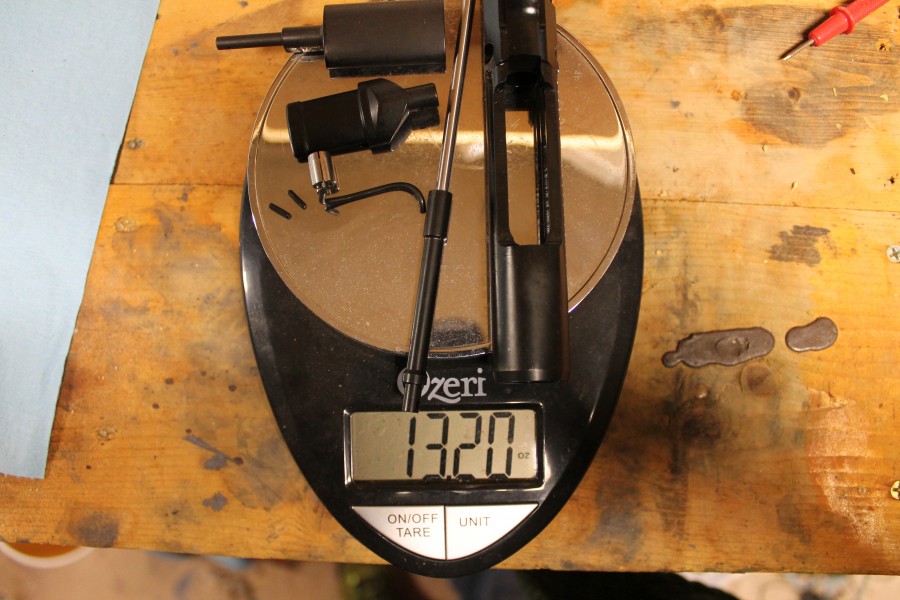 One of the things that piqued my curiosity about this system was weight. One of the major detractors of a piston system to those high speed/low drag operators who care about such things is that a piston driven gun automatically weighs 40 pounds more. Obviously, your everyday mall ninja can’t be expected to hump that much weight around and still be operationally efficient, so the DI system is better. Or so I hear.
One of the things that piqued my curiosity about this system was weight. One of the major detractors of a piston system to those high speed/low drag operators who care about such things is that a piston driven gun automatically weighs 40 pounds more. Obviously, your everyday mall ninja can’t be expected to hump that much weight around and still be operationally efficient, so the DI system is better. Or so I hear.
In the world of science and reality, I found that the Osprey system added a whopping 3.15 oz. My trusty scale used above says that 8 rounds of Federal XM 193 weighs 3.25 oz. Use that as a reference point for decision making. Personally, I find 3 oz to be fairly trivial in the grand scheme of things, but I’m more of a half speed, standard drag kind of operator.
Tier 1 Operators might also be asking themselves if they can use a free float rail with this system. Nothing on the Osprey website confirms that you can use a free float hand guard but several threads on AR15.com here and here seem to indicate that Midwest Industries and Seekins Precision make free float rails that will be compatible with the piston system from Osprey.
Ultimately, this sort of retrofit is all about the reliability, baby and the Osprey kit didn’t disappoint. I ran 250 rounds of mixed .223 REM and 5.56 through it. And I truly mean mixed. Every time I go to the range, or a I clean out the shop, I inevitably end up with loose rounds. I throw them in a bag and keep them for gun tests exactly like this one. The sack contained all manner of high power, low power, hollow point, FMJ, as well as clean and dirty rounds.
The MEAN gun fired all 250 without a hiccup. I ran it until the fancy new hand guard smoked and never got it to choke. So I handed it back over to Nick who had a Bump Fire stock to test. That’s it in the embedded video, above. And as you can see, the operator failed before the gun did. With 250+ rounds down the tube, I feel confident saying that reliability will certainly not be impacted by the addition of the Osprey kit.
Specifications: Osprey Piston Kit
- Steel, black oxide finish.
- Handguard – Reinforced polymer composite, black.
- Kit includes preassembled piston assembly, bolt carrier, handguard, and instructions.
- Carbine kit fits 11½” to 16″ barrels with .875″ O.D. or smaller, and carbine-length gas system.
- Rifle kit fits 20″ barrels with .875″ or smaller O.D. and rifle-length gas system.
- Price: $299
Ratings (out of five stars):
Fit and Finish * * * * *
All of the parts fit together well and showed the high quality finish you’d expect in a $300 item.
Reliability * * * * *
I put 250 rounds into it. Leghorn is putting a lot more through and neither of us have experienced any failures related to the piston kit
Cleanliness * * * * *
As a piston kit is want to do, it kept the guts of the MEAN gun completely clean. After 250 rounds, I soaked a Q-tip in KG1 and ran it through the receiver. I came away with a slightly oily swab and that’s about it.
Overall * * * * *
I’ve never been so bothered by a rigorous cleaning schedule that I’ve felt compelled to make the switch to a piston-driven AR. But if I ever change my tune and I want to retrofit a gun I already have a significant investment in, I’d be hard-pressed to find a better kit than the offering from Osprey. It was relatively easy to install, it kept the action clean, and ended up displaying an unfailing level of reliability. You really can’t ask for much more than that.

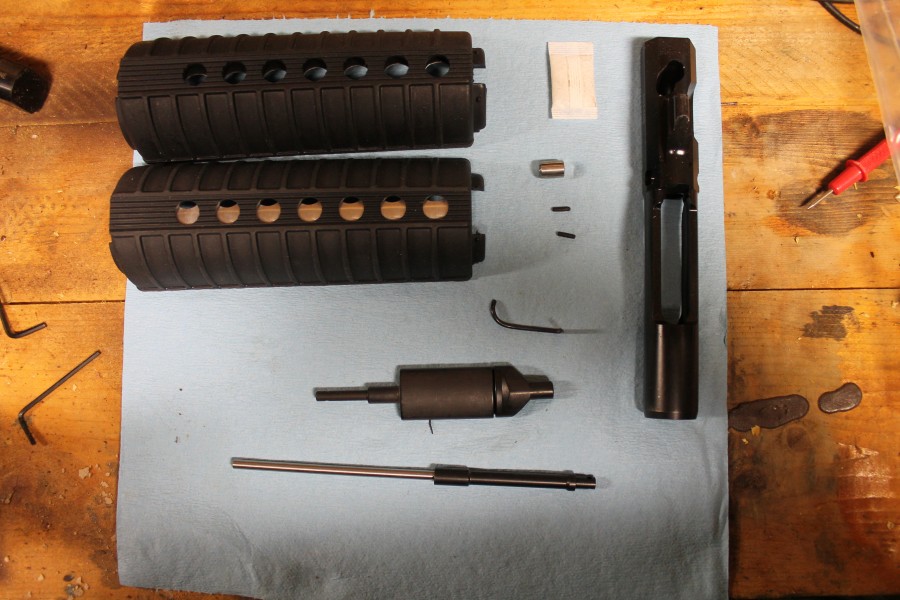

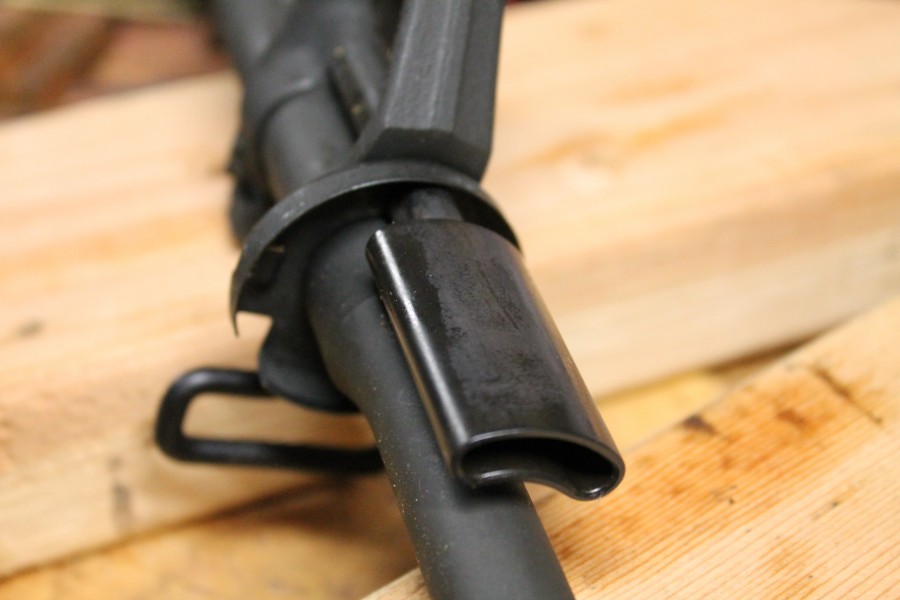
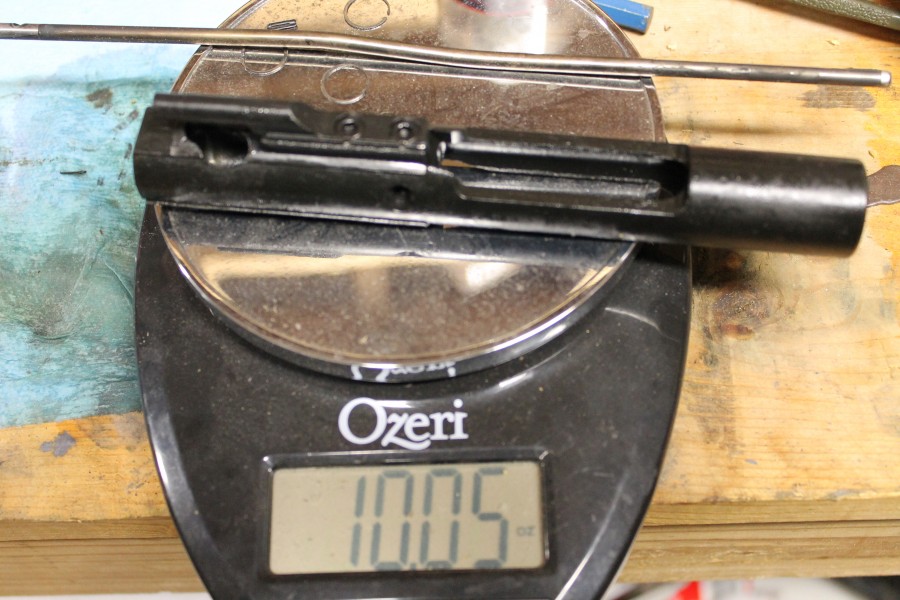
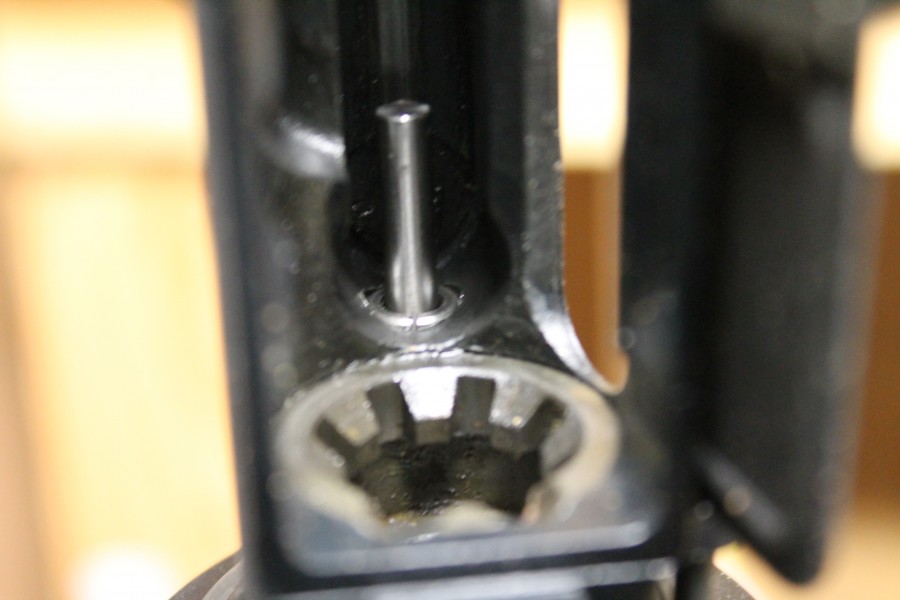



To make it even more confusing: this or Adams Arms?
Adams Arms has been on the market for several years, and have made many iterative improvements to their system. This here is the new kid on the block, with no clear advantages that I can see, other than it can use a standard gas block. What do you think?
Don’t forget the Ares GXR-35 conversion kit.
Hello,
So far the last 5 AR15’s I’ve built have all had the Osprey Defense Gas piston kit installed in them, my self and the owners of these 5 guns are completely satisfied with these gas piston kits. They keep the upper receiver amazingly clean and cool to the touch. After firing many hundreds of rounds through each of these 5 guns they remain almost spotlessly clean inside. There is some powder residue on the bolt face, but that is as far as it goes, the bolt carriers are always clean and oiled when finished firing, like they have not been fired at all. I will not build another AR15 without an Osprey Defense gas piston kit installed in it, they are really that good. I’m trying to finish another AR15 right now, 06/30/2017 and have had to back order the Osprey Defense gas piston kit, as they are currently out of stock. They told me over the phone they will be shipping probably by the end of next week. Dave.
Kind of on this subject, I trust the guts and gals on this site so I wanted to get some opinions.
I have a “stock” xm-15 from bushmaster that was made, I think, before they were sold. It is a solid shooter and I have no complaints about it but I was thinking of adding a piston and/or a coated bolt… Kind of like a fail zero type. What do you all think?
“It is a solid shooter and I have no complaints about it…”
You kind of answered your own question here. But, if you must, I’d say buy a separate nickel boron BCG. Worst thing that would happen is you have two BCG, one in the gun and a spare lubed up and ready to go in a plastic baggy.
I am a fan of nickel boron, it’s easier to clean and runs slick without lube.
It is a decent shooter but I want to eliminate, as much as possible, possible malfunctions…. Murphy and his laws show up at the most inopportune times. I have no experience with the coated bcg’s but I have heard good things. What company do you recommend?
http://www.blackriflearms.com/M16-Bolt-Carrier-and-Key-with-Buffer-Technology-_p_20.html
Make sure to check out their other options.
If you want the absolute best, get an NP3+ coated bolt. It’s slightly better than NiB (though, mind you, at that point most improvements are largely theoretical anyway).
A coated bolt is a worthwhile upgrade for any DI rifle mainly for the ease of cleaning, seeing how DI craps all over it in the first place. Other than that I don’t think it’s such a big deal.
As for pistons, it’s not worth it to mod an existing rifle that runs well. If you really want one, get a dedicated piston upper with BCG, from a company that figured out how to deal with carrier tilt (i.e. not Ruger).
Though if you want it for reliability reasons (building a TEOTWAWKI gun?), just go and buy something that’s designed that way from ground up. Like, say, a quality 5.56 AK.
If its not broken, don’t fix it.
I installed the Osprey On my Build. In March 2010 It comes with its own dedicated Carrier. Use your own bolt, remove the gas rings. Runs like a champ and cleaned it since. Lightly oil the guts. Just make sure your using a 3 ounce Buffer.
Mine is on a Mid Length Bill Wylde Match grade barrel. .93 up to the Mid, then out to the threads. Osprey has great Customer Service. When first installed and tested it was a single shot. The Buffer I had was 5 ounces.
It was cycling 99%, not far enough back to pick up the next round. Put in a 3 ounce buffer, it has never stopped from that point. Carbon not an issue on the BCG. Does make the Shiney SS barrel a little darker under the Handguards.
Is the buffer needed on all of them, or just the ospry?
Rock on, dark shroud and mike…thanks for the help. Much appreciated.
And thanks for everyone else who posted afterwards also. Fwiw, I’m thinking a coated bcg is the way I’m going to go.
I would leave it alone.
You will not be gaining anything by adding a gas piston, which is unneeded in a AR imo. Unless you are buying it for the intellectual curiosity.
Another reason, and the one I am looking for, is your gun is suppressed. Really gives a lot of dirt in very few rounds fired. Would be a lot more fun without the dirt.
“I’m more of a half speed, standard drag kind of operator.”
Pure brilliance!
I’m actually nearly quarter speed and I have a significant drag because of my ablative layer of bacon and cheddar cheese I carry around after the years of neglect I heaped upon this Temple to Buddha.
Carrier tilt?
Nope. No tilting…it ain’t pinball…lol
I’m pretty sure carrier tilt is critical when launching or recovering aircraft, otherwise not so much.
Tyler, isn’t there just something like a rod which needs to be cut off to work in a 9″ bbl, or do I need to just wait for that? Will this work under a normal free-floated rail or forend? This sounds like a good plan, just trying to figure which upper I want to try it on.
During the whole debacle of no AR’s or ammo after the election. I found an M4 profile one carbine length. But it got backordered. Then one morning I found the 223 Wylde Match barrel it arrived before the other. It was 16 inch but with a mid gas. I called Osprey they said I just needed a Mid length Op-Rod. One call and it was on the way.
They have full, mid and carbine length. And you can probably get one in SBR. Just goto Osprey’s website.
The customer service was great.
As to handguards. I had the carbine kit. I just used Magpul MOE middies. It will work with free floats. As long as the piston clears.
The biggest issue with the current Osprey system is that there is an EXTREMELY limited number of handguards that will work with it. I do like the light-weightiness of the entire system (compared to the non-XLP Adams Arms setup) but the overall question should be, why bother? The only “problem” that gas pistons “solve” is that the chamber doesn’t get dirty (instead, the piston and things around the piston get dirty) but on the flip-side, it creates a few problems. Added parts/weight (added points of failure), carrier tilt and changes the way the AR recoils. I have a couple DI AR’s that never get cleaned (literally) and all I need to do is add oil…any kind of oil. I’ve used everything from used motor oil to high-dollar FireClean. It all works.
Carrier tilt is not really an issue on most modern piston designs now that it got some engineering attention. I didn’t notice anything like this on my AA, in particular. I’ve heard that Ruger still didn’t fix it on their guns.
As far as reliability and whats get dirty. The thing is, piston movement is simpler than bolt & carrier movement, and is not where feeding, extraction and ejection occurs, so piston getting dirty is not a big deal. It’s also not the part that you lube, and hot gases on the bolt contribute to the lube on it drying up that much faster (which is why AR likes to be run “wet” if you’re going through hundreds of rounds rapidly, unless you have a coated bolt).
I added a Ruger SR556 to my collection a couple years after they came out. I have probably put at least 5k rounds through it and I have not noticed any signs of carrier tilt. I like the rifle, it’s just very front heavy. It’s accurate enough and I just use it as a bench rifle. It also hates steel cased ammo after the first 1k rounds.
I still don’t feel comfortable with a “free floating” bolt carrier in a gas piston gun. If you look at nearly every (if not all) guns that were initially designed as a gas piston system, you’ll see that the carrier rides on rails. After running thousands and thousands of rounds in a DI gun without ever cleaning (not even a little bit), I think it’s a solution looking for a problem.
Also, BillC mentioned something that I forgot, the added nose weight. Also I wonder how the barrel harmonics are affected. I’m sure it varies with different systems and configurations so an add-on system could negatively affect accuracy (obviously not a major concern on certain setups like SBR’s)
I agree that rails are better, though I would argue that rails are better in general – AR design (regardless of whether it is DI or not, though DI makes it worse due to higher operating temperatures adversely affecting lubricants) is sensitive to dirt in the receiver because the contact area of the bolt carrier and the receiver is so much bigger, and the tolerances are tighter.
But yeah. If one really wants a piston for the sake of reliability, just get an ARAK upper.
OR….. you could buy an AK….
Please put down the pitchforks.
Heretic!
Stoner’s brilliant invention has been trumpeted far and wide for it’s stone-ax reliability, and the design heralded as pure genius by other gun developers. It is now used far and wide on semi-auto rifles the world over, and it’s hard to imagine how far it has made the rifle progress.
Or not.
… an AK … chambered in 5.56 …
So yeah, about those pitchforks…
And it gets even more confusing when you tell people that all ARs have a piston, but not all ARs have a OP Rod.
A pretty and post accuracy test would have been nice
Poor before and equally poor after.
I think he meant without the strange mix of ammo.
I shot PMC Bronze through it at 100 yards and got palm sized groupings. I shot the same ammo afterwards and got similar groupings.
Did anyone else find any problems with using cheap steel ammunition with this system? I had multiple jams and very unreliable performance with steel ammunition, (I use steel for the range because it’s very cheap). I was thinking it might be because the working pressure is not enough to eject and reload a new round, are there any armorers on here that can confirm that this is what it might be? Also note I’ve had zero problem with better grade ammunition or any brass ammo for that matter. This piston system is very reliable for brass ammo, and I’ve noticed when I clean my weapon it’s hardly dirty at all. I haven’t tried the SOCOM looking walk out of water and fire like they said you can do with this system but so far no issues other than not being able to use my cheap range ammo.
Been having unbelievable issues with my rifle after installing the ops 416. I get 1 shot off and my bolt carrier gets stuck in the buffer tube. I have to take the gun apart to get the carrier unstuck. This has happened twice. I’ve talked to the company and my upper has been back and forth between the service department. The tech has hooked it up to a dozen different lowers and can’t get it to fail. I’ve hooked it up to my friend’s and it won’t function. Has anyone had any similar problems?
I have installed the ops kit on 2 of my guns, first was a Rock River AR-15 and it worked great I ran about 2K worth of ammo through it had no issues in 2014-2015. Decided to do another piston kit, didn’t go cheap on it got the spikes tactical rail ordered the operating rod for the quad rail, billet upper and lower with Stag Arms 18-inch stainless steel barrel and NP3 coated stag bolt. Now both guns are short stroking on every round. Using PMC 55 grain ammo that hasn’t changed from what I was shooting before, tried swapping buffers, buffer springs, hell I just order from Brownells before I posted this 3 different buffer springs, and two different brands of 3 ounce buffers. When I shoot both guns I have to manually cycle the weapon to get the next round to load. The chambered round will fire and eject but the next round will next get picked up. I have literally gone through both guns and what made me not think I was losing my mind is that my buddy has the same kit ops 416 and yesterday he had the same issue as I did with his AR-15.
Any ideas? Like I said have swapped buffers, buffer springs, bolts, extractors, gas blocks, swapped a barrel in my latest build, have the correct operating rod, have the spikes 13.2-inch free float tube that allows the system to work and move freely. The gun just short strokes, it short strokes on 5.56 55 grain or 62 grain, it short strokes with a regular buffer and a Wolfe lower power spring. I have called and emailed with osprey but they have since changed owners since I bought my kits (same for friend). Side note new owners did their best to be helpful but they really had no clue as to why I am experiencing these issues.
I had about the same problem. My gun worked perfect before the Osprey with all types of .223, 5.56, high and low power. I put it the Osprey system it wanted to short stroke all the time with the cheap ammo. Send it back to Osprey twice to replace the piston with a larger piston, in order to boost up the blow back of the piston. This still didn’t make it shoot the same ammo as with the DI system. Still short stoked. Wouldn’t drive the bolt back far enough to cycle another round. I switched it back to the DI system and dumped the Osprey piston system. Now I am back and running with no problem.
That sucks about your guns. I had a similar problem, except I had a suppressor handy as well. My rifle shot perfectly with the can on, and short stroked without it. I went the easiest route and took two of the three weights out of the standard 3 oz. buffer and replaced them with an equal length of fuel hose. My buffer now weighs 1.88 oz. It shoots absolutely beautiful! If you still have the piston kit, try that fix first before you give up on it. 3000 flawless rounds later and I’m a happy camper. Also happy about the cleaning times. Much shorter… Try it. I’m curious to see your results in comparison to my own…
Will this work with a PalmettoStateArmory Mid length Freedom upper? Someone also mentioned it will work with Magpul Handguards??
I built a rifle using an osprey kit. It short stroked right out of the box without a suppressor. It shot perfectly with a can… I swapped the buffer out and the light weight works awesome without a can. I’ve put just over 3000 Rds through it since January and I’ve yet to see a malf. I still have to scrub the action after a few hundred Rds through a suppressor, but it’s nothing to clean in “loud mode.”
Comments are closed.